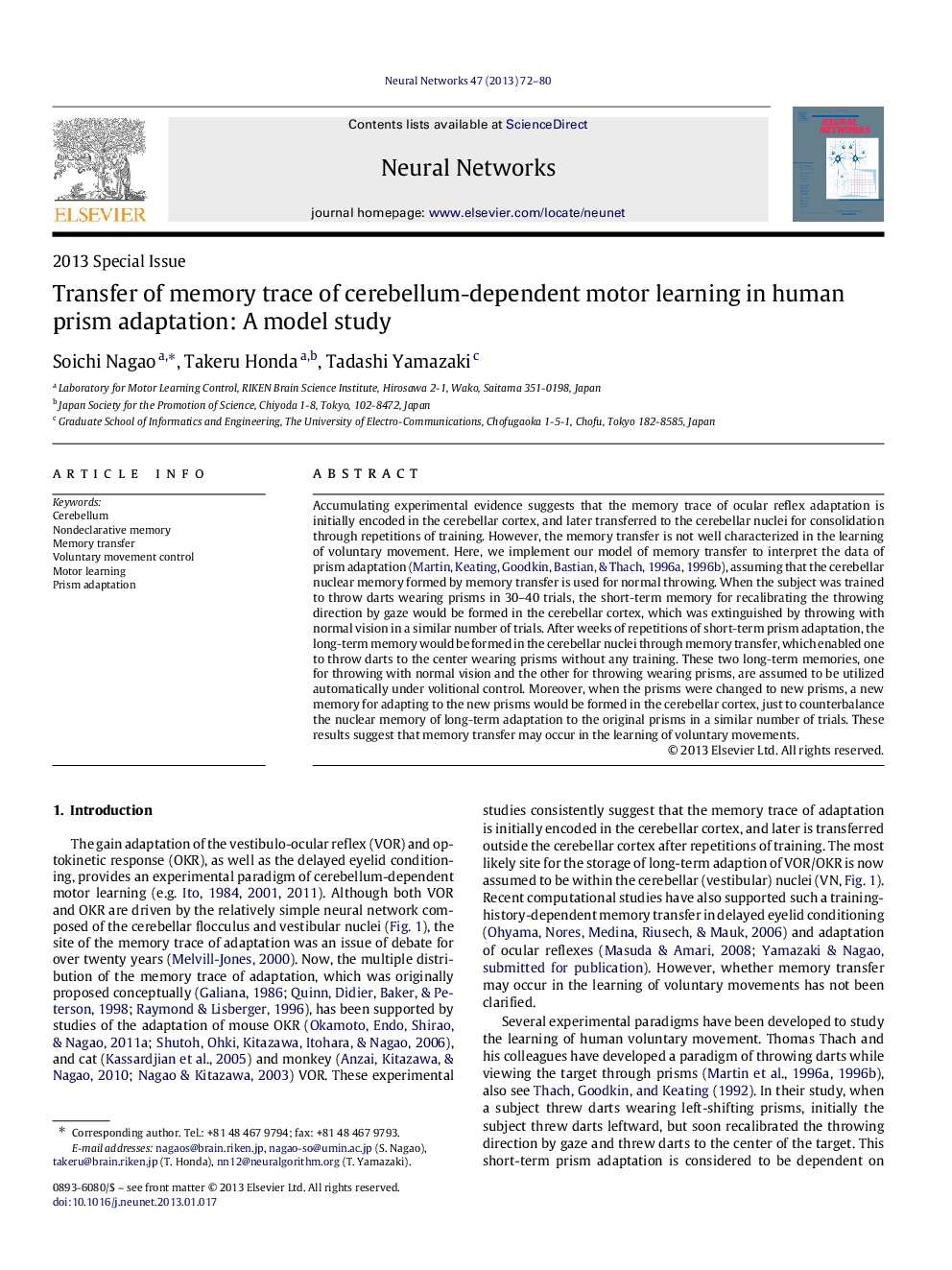| Article ID | Journal | Published Year | Pages | File Type |
|---|---|---|---|---|
| 6863372 | Neural Networks | 2013 | 9 Pages |
Abstract
Accumulating experimental evidence suggests that the memory trace of ocular reflex adaptation is initially encoded in the cerebellar cortex, and later transferred to the cerebellar nuclei for consolidation through repetitions of training. However, the memory transfer is not well characterized in the learning of voluntary movement. Here, we implement our model of memory transfer to interpret the data of prism adaptation (Martin et al., 1996a, Martin et al., 1996b), assuming that the cerebellar nuclear memory formed by memory transfer is used for normal throwing. When the subject was trained to throw darts wearing prisms in 30-40 trials, the short-term memory for recalibrating the throwing direction by gaze would be formed in the cerebellar cortex, which was extinguished by throwing with normal vision in a similar number of trials. After weeks of repetitions of short-term prism adaptation, the long-term memory would be formed in the cerebellar nuclei through memory transfer, which enabled one to throw darts to the center wearing prisms without any training. These two long-term memories, one for throwing with normal vision and the other for throwing wearing prisms, are assumed to be utilized automatically under volitional control. Moreover, when the prisms were changed to new prisms, a new memory for adapting to the new prisms would be formed in the cerebellar cortex, just to counterbalance the nuclear memory of long-term adaptation to the original prisms in a similar number of trials. These results suggest that memory transfer may occur in the learning of voluntary movements.
Related Topics
Physical Sciences and Engineering
Computer Science
Artificial Intelligence
Authors
Soichi Nagao, Takeru Honda, Tadashi Yamazaki,
